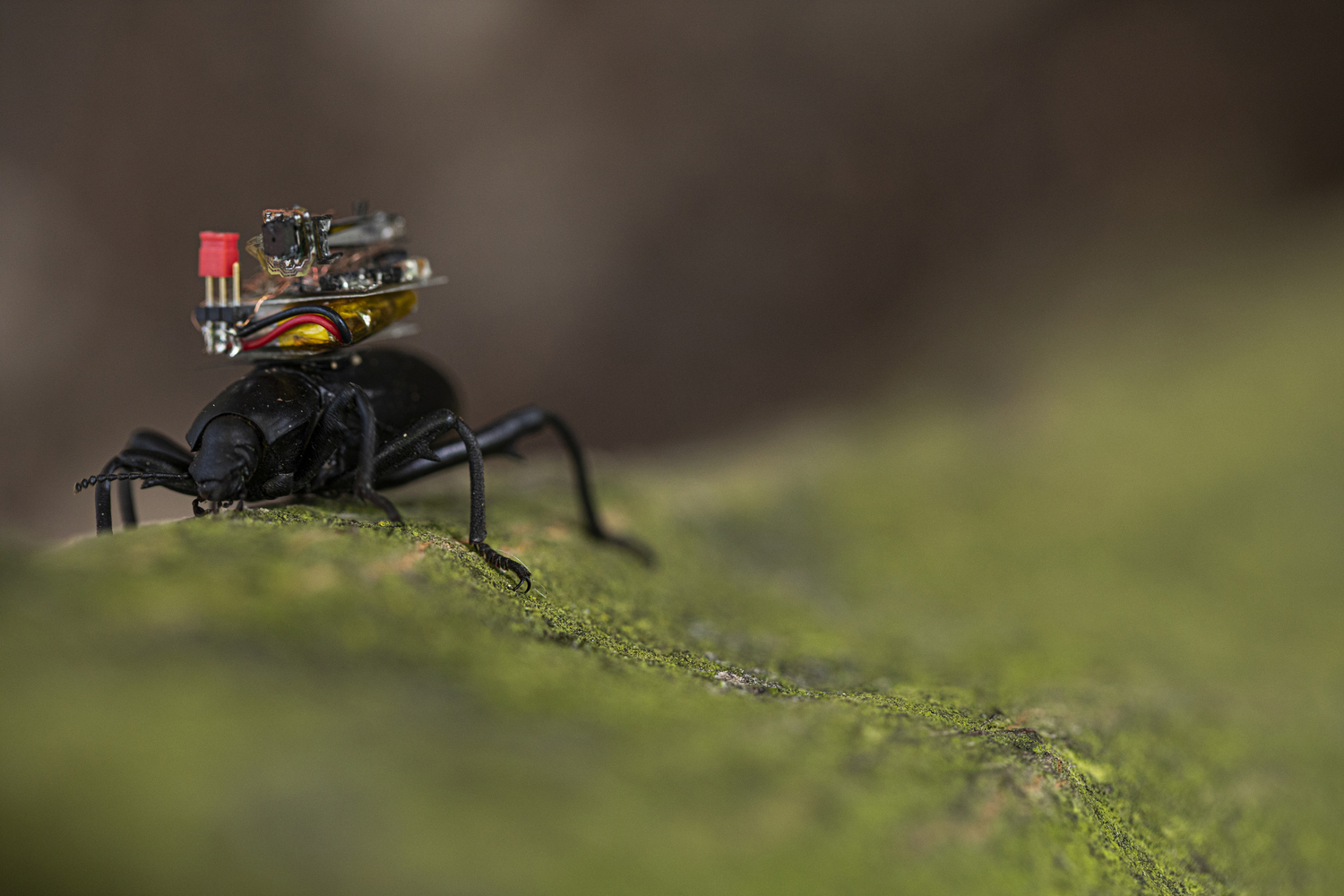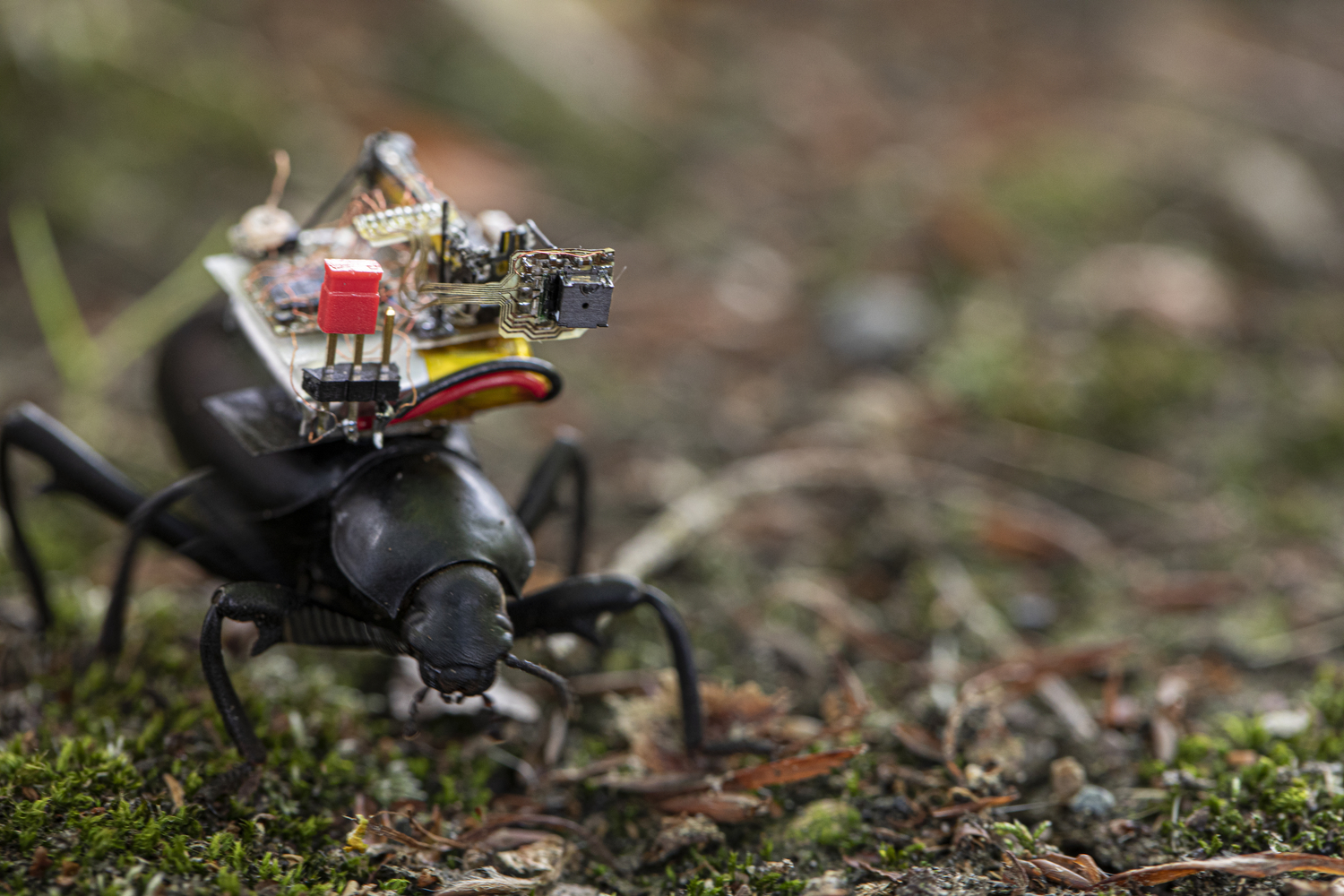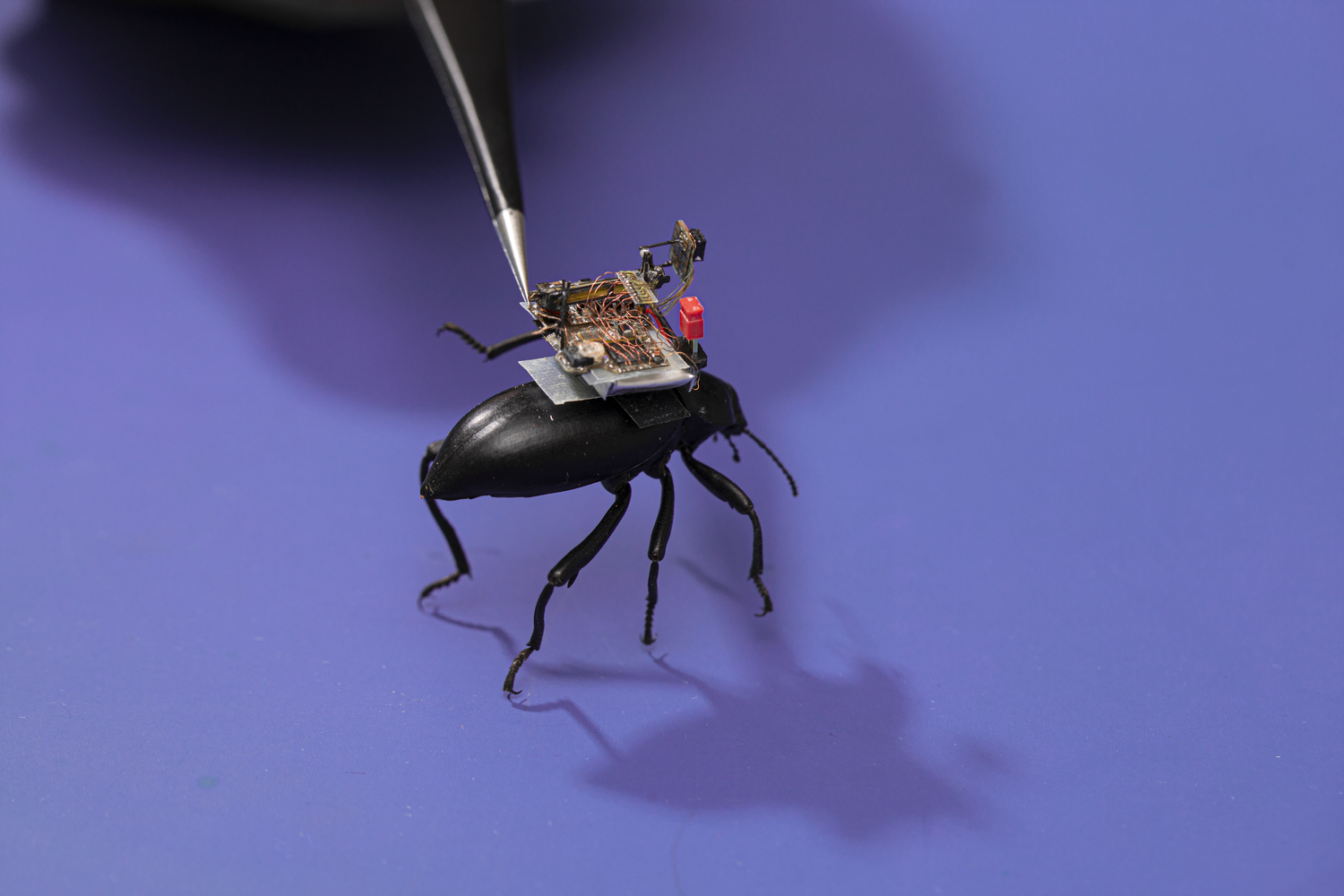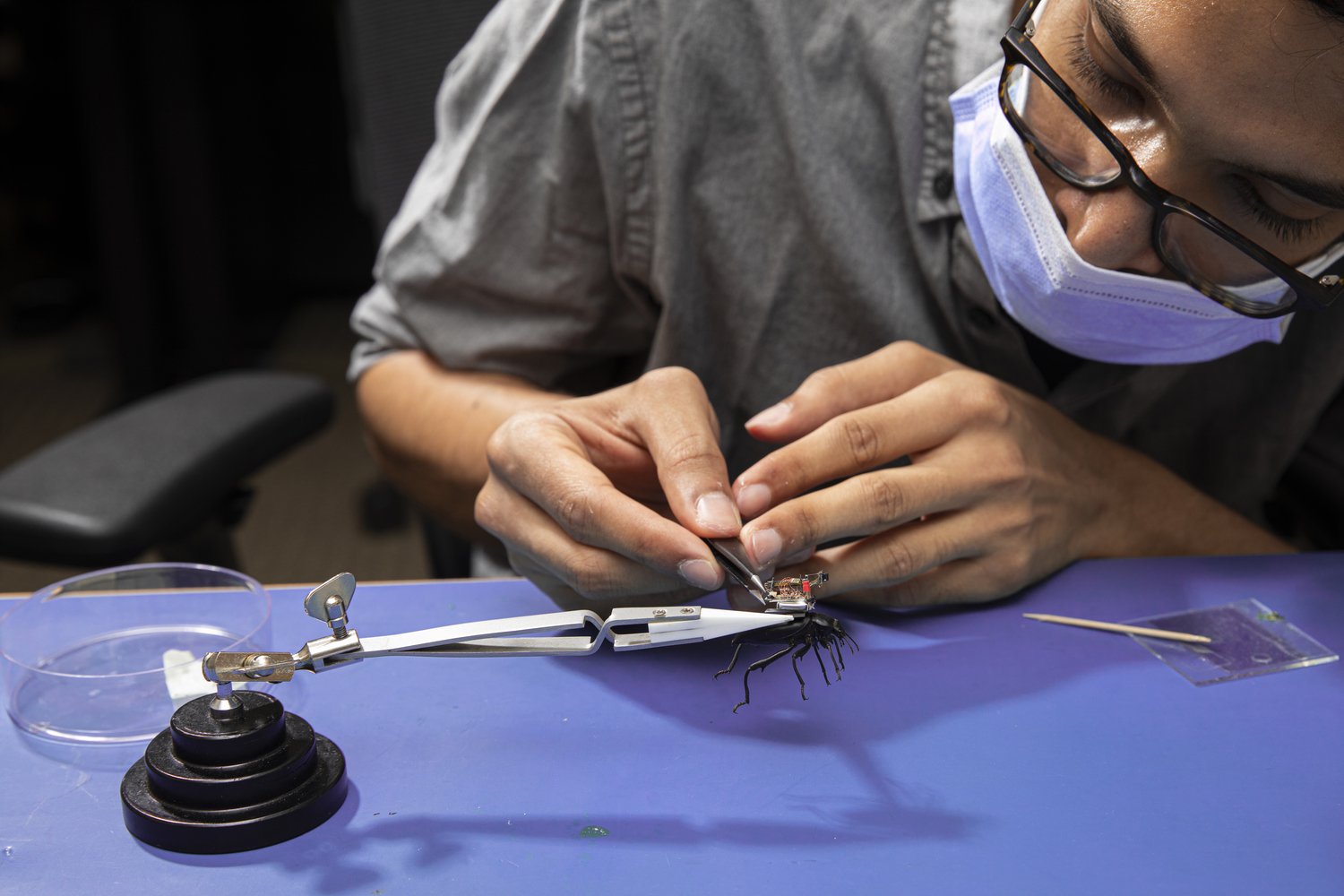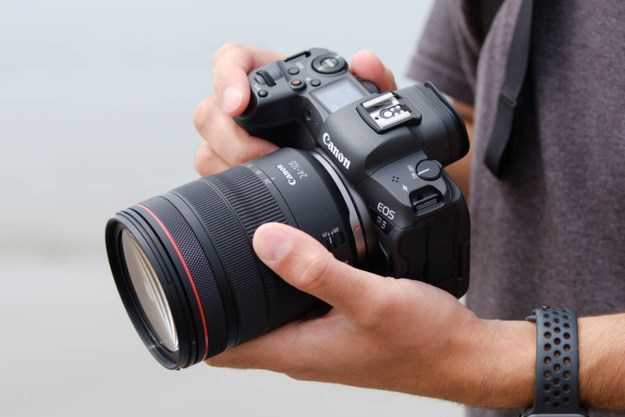Scientists have now attached GoPros to a number of different animals for the sake of research — but what about the smallest members of the animal kingdom? Inspired by the biology of a bug’s eye, researchers from the University of Washington created a camera that’s small enough for some bugs to wear, weighing just 250 milligrams (that’s .009 ounces). Modeling the bug camera after insect vision could both help create technology for smaller robotics while also opening avenues for entomology research.
The research, published today in Science Robotics, equipped two types of beetles with a camera backpack, followed by creating a miniature robot to wear the same camera system. To make a camera that’s only half the weight similar beetles are known to be able to carry, the team had to go well beyond to small cameras used in smartphones, taking inspiration from the bugs themselves.
As study co-author Sawyer Fuller explains, some flies have a “high-resolution” center and turn their heads when they need to see in more detail. The tiny camera backpack is outfitted with a mechanical arm that moves the camera. The design allows the bug camera to capture higher resolution images than a wide-angle lens could, with less power.
Conserving power to keep a heavy battery off of the bug required several other changes, besides the moving arm. The camera sends video to a smartphone via Bluetooth, but the black-and-white video is only recorded at one to five frames per second. An accelerometer also only triggers the camera when the bug is moving, extending the tiny battery from a two-hour runtime to six.
The researchers said that the beetles were still able to move freely, including climbing up the sides of trees and navigating gravel, and lived for more than a year after the experiment.
While a bug photographer is a cool idea, the group’s goal is to use the experiment to create smaller robotics. After successfully equipping the beetles, the group created the smallest wireless vision terrestrial, power autonomous robot using the camera to navigate. The bug-sized robot uses vibrations to move. Those vibrations proved too difficult for the camera, however, and the robot had to programmed to stop moving before snapping a photo. Despite the need to stop, the team says the bug-inspired bot is faster than earlier robotics that use vibrations to move.
Besides the robot that has already resulted from the experiment, the researchers hope the camera could be used to study insects and capture insects. “This is the first time that we’ve had a first-person view from the back of a beetle while it’s walking around,” said co-lead author Vikram Iyer. “There are so many questions you could explore, such as how does the beetle respond to different stimuli that it sees in the environment? But also, insects can traverse rocky environments, which is really challenging for robots to do at this scale. So this system can also help us out by letting us see or collect samples from hard-to-navigate spaces.”
The group plans to put the research in the public domain to mitigate some of the privacy risks involved with creating a tiny camera that can go almost anywhere by allowing for additional research. Iyer and Fuller were joined by co-lead authors Ali Najafi, senior author and associate professor Shyam Gollakota, and co-author Johannes James. A Microsoft fellowship and the National Science Foundation funded the project.
